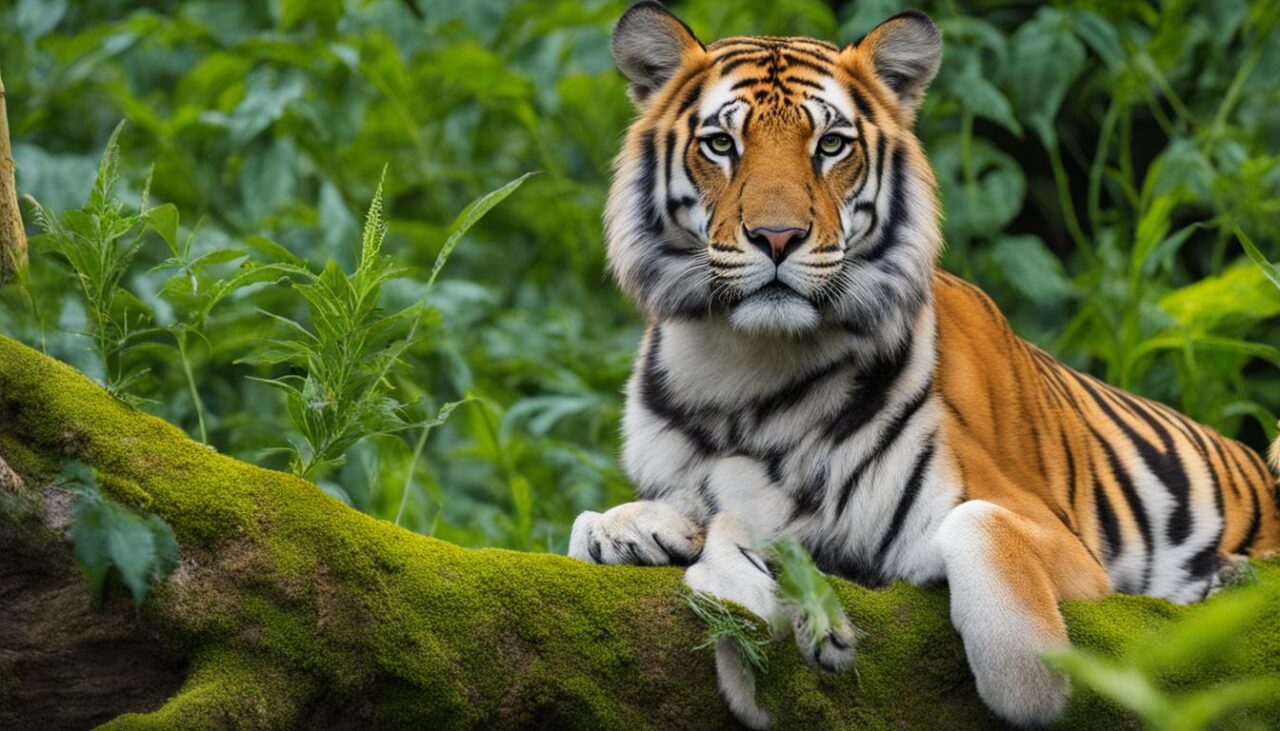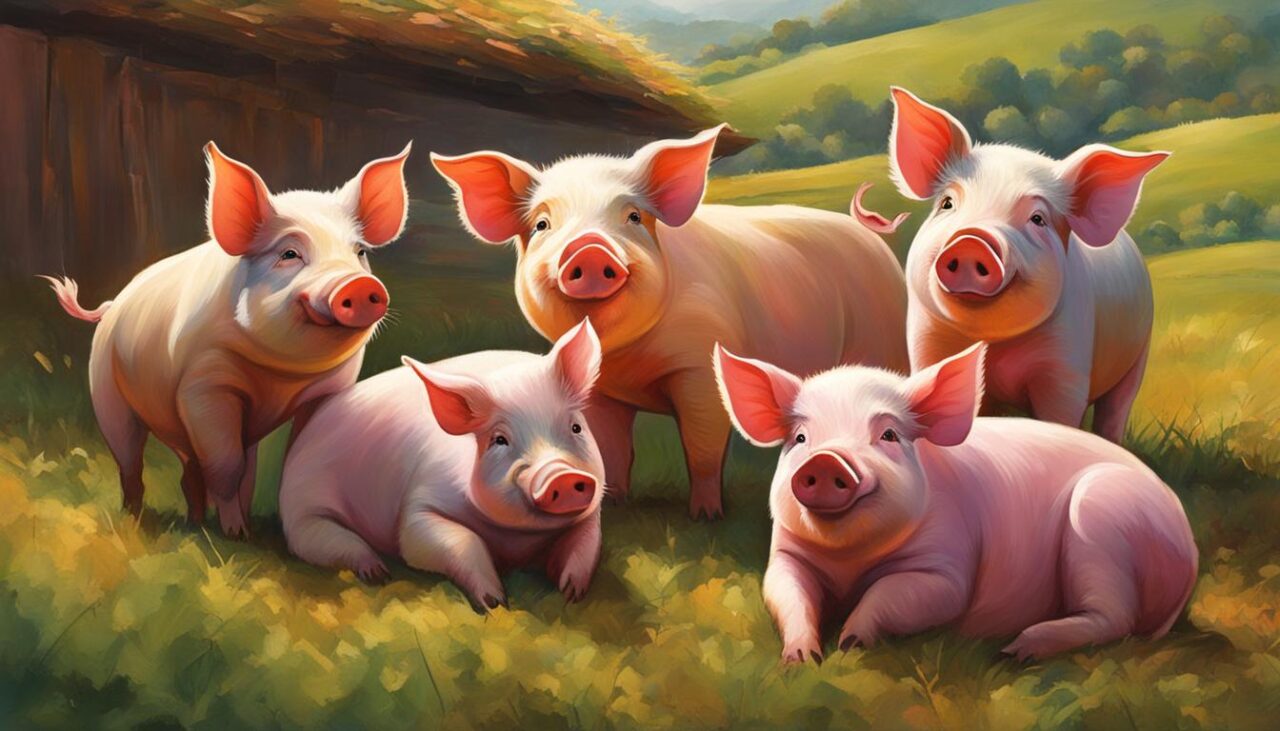Have you ever wondered how animals communicate with each other? From the songs of birds and the dances of bees to the whooping of primates, animals have their unique ways of expressing themselves. But have you ever thought about how pigs communicate? Pigs are fascinating creatures. They are highly intelligent, social, and communicative beings that have their own language. In this article, we attempt to decode the language of pigs and other animals.
Contents
Key Takeaways
- Animal communication involves a range of signals and cues, including vocalizations, body language, and chemical signals.
- Behavior analysis plays an important role in understanding animal communication.
- Pigs communicate with each other through grunts, squeals, and subtle body language cues.
- Pigs interact with various wildlife species in their habitats, providing opportunities for interspecies communication.
- Animal studies help us gain a deeper understanding of communication across species.
The Complexity of Animal Communication
Let's face it – animals are much more complicated than we give them credit for. From elephants using seismic signals to communicate with each other to bees doing their waggle dance to share information about nectar sources, the world of animal communication is diverse and fascinating.
When it comes to communication between different species, things get even more complex. Take, for instance, the relationship between bees and flowers. Bees have evolved to detect specific visual and olfactory signals that plants emit, allowing them to identify flowers with high nectar content. In turn, plants have adapted to their pollinators' preferences, creating a mutually beneficial relationship.
But how do we unravel the mysteries of animal communication and understand the intricate signals and cues that different species use to interact with each other? Enter behavior analysis – a field of study that examines the relationships between behavior and the environment. By analyzing the context in which animals communicate and observing their behavior closely, researchers can begin to piece together a more comprehensive understanding of animal signals.

The image above captures how different animals use various signals and cues to communicate with each other, from birdsongs to chemical signals. By incorporating behavior analysis into their research, animal communication experts are shedding light on the complex dynamics that take place between different species, enhancing our appreciation for the intricacies of the animal kingdom.
Unveiling Pig Communication
Move aside, cat videos; pig communication is the new adorable craze. But pig communication isn't just cute; it's also complex and fascinating. Much like humans, pigs use a variety of signals to communicate with each other. From grunts and squeals to subtle body language cues, pig communication is a sophisticated system that is still being deciphered and researched.

Behavior analysis is crucial in understanding pig communication. By analyzing their interactions with each other and with other farm animals, we gain valuable insights into the intricacies of their communication system. Did you know that pigs also have their own distinct personalities and use their communication styles accordingly?
“Oink” may be the most well-known pig sound, but their communication system is so much more than just that. It's like a secret piggy code that we need to crack.”
So why are we so fascinated by pig communication? Perhaps it's because of the similarities we share with our porcine pals. Both pigs and humans are social creatures that thrive on strong relationships and communication with others. Or maybe it's simply because watching pigs interact and communicate with each other is just plain adorable. Whatever the reason, studying pig communication is an important part of our ongoing efforts to understand animal behavior and communication across species.
Speaking of interspecies communication, let's take a closer look at wildlife observations and how pigs interact with other animals in our next section.
Wildlife Observations: Pigs and Other Species
Have you ever wondered what goes on in the wild when pigs aren't rolling in the mud? Well, as it turns out, pigs are more social and interactive than we give them credit for. They often rub shoulders with other animals, and through careful wildlife observation, we can see that they're quite chatty too.
Pigs have a particular interest in other wildlife species and are more likely to communicate with them compared to other farm animals. Through their grunts, body language, and subtle cues, they demonstrate a refined level of interspecies communication.
But what do these conversations sound like? Well, that's where careful wildlife observation comes in. By analyzing their animal studies and behavior, we can learn a great deal about the complex dynamics that exist between pigs and other animals. From bouts of playful interaction to more serious negotiations, these interactions provide valuable insights into the intricacies of the animal kingdom.
So, don't be surprised if you come across a pig having a heart-to-heart with a deer or a coyote. It's just their way of keeping up with the local wildlife in the know. Overall, through wildlife observation, we are constantly uncovering more about the pig communication and their habits.
Animal Studies and Communication Research
Let's be honest, animals are a mystery to us, and their communication is no exception. But that's where animal studies come in! Through years of meticulous research and observation, animal communication experts have made significant strides in decoding the language of our furry and feathered friends.
These studies have gone beyond simply analyzing body language and vocalizations to exploring the role of chemical signals and electromagnetic fields that many animals use to communicate. In fact, some scientists believe that animal communication is so complex that it might even exceed human communication in some ways.
One of the most critical aspects of animal studies is behavior analysis. By observing how animals interact with each other and their environment, researchers gain insight into the natural rhythms and patterns of their behavior. Behavior analysis also plays a crucial role in identifying patterns in communication, allowing researchers to interpret even the most subtle of gestures or vocalizations.
Dr. Jane Goodall once said, “The more we learn about the true nature of non-human animals, especially those with complex brains…the more ethical concerns regarding their use in any form of (human) endeavor begin to arise.”
The work of animal communication experts is not just about advancing our scientific understanding of animals. It also raises ethical questions about how we interact with and treat animals, particularly those that are highly intelligent and social. As we uncover more about their communication and behavior, we must consider the implications of our actions and strive to find ways to coexist more harmoniously with our animal counterparts.

Methodologies in Animal Communication Research
There are various methodologies used in animal communication research, ranging from field observation to controlled laboratory experiments. For example, researchers might use radio telemetry to track animal movements and study their vocalizations in natural habitats. Alternatively, some studies might involve training animals to perform specific communication tasks under controlled conditions to measure their responses. Each methodology has its strengths and weaknesses, and researchers must carefully select the appropriate one based on their research question(s).
Behavior Analysis and the Future of Animal Studies
Behavior analysis will continue to be a crucial aspect of animal studies, particularly in the realm of communication. As researchers continue to uncover new aspects of animal communication, behavior analysis will play a vital role in interpreting these discoveries and advancing our scientific understanding of the animal kingdom. Through ongoing research in animal studies, we can gain a deeper appreciation for the diversity of communication methods across species and learn to better respect and coexist with our animal neighbors.
Conclusion
Who knew that pigs were such communicative creatures? From grunts to squeals to subtle body language, these intelligent beings have an entire language of their own. By observing their interactions with other farm animals and wildlife, we can gain a deeper appreciation for the complexities of the animal kingdom.
Furthermore, the study of pig communication and animal communication as a whole provides valuable insights into the ways different species interact and communicate with one another. With ongoing research in the field of animal studies and behavior analysis, we continue to unravel the mysteries of the natural world, enriching our understanding of the intricate and fascinating ways different species communicate.
So the next time you see a pig, take a moment to appreciate their unique communication style. And who knows, maybe you'll even pick up on a few of their cues. After all, it's just animal communication!







